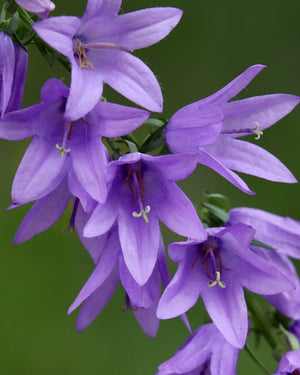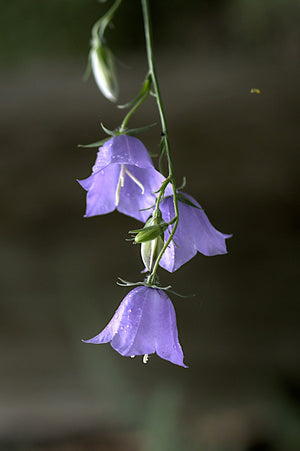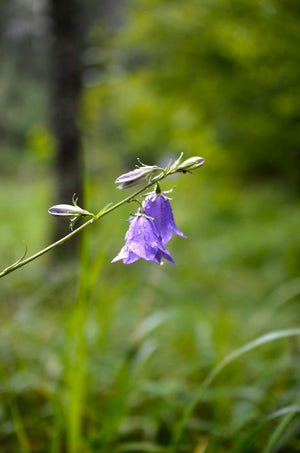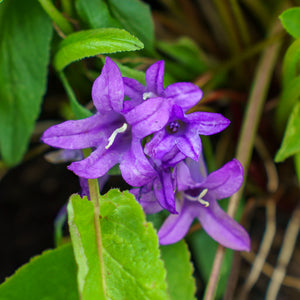The Campanula Guide
Campanula, also known as Bellflower, brings a touch of classic beauty and charming elegance to any garden landscape. With its bell-shaped flowers and lush foliage, Campanula plants are perfect for adding color and texture to borders, garden beds, and containers. These plants are admired for their ability to thrive in a variety of conditions and their minimal maintenance requirements. Whether you're aiming to enhance your flower garden, create a serene display, or add a unique element to your space, Campanula offers a captivating and versatile solution. Explore our Campanula Guide to learn more about cultivating and caring for these delightful plants, and discover how to incorporate them into your garden for lasting beauty and enjoyment.

About Campanula
Campanula is a large genus of flowering plants in the Campanulaceae family, comprising about 500 species. These plants are native to temperate regions of the Northern Hemisphere, including Europe, Asia, and North America. The name "Campanula" is derived from the Latin word "campana," meaning bell, reflecting the characteristic bell-shaped flowers of the genus.
Campanula plants are known for their charming, bell-shaped flowers that come in various shades of blue, purple, white, and pink. The flowers can be single or clustered and typically bloom from late spring to early summer. The foliage is usually green and can be either rounded or lance-shaped, depending on the species. Some popular species and varieties of Campanula include Campanula persicifolia (Peach-Leaved Bellflower), Campanula carpatica (Carpathian Bellflower), and Campanula poscharskyana (Serbian Bellflower). Each species has its unique characteristics, but all share the common traits of beautiful flowers and easy care.

Planting Campanula
Campanula plants require specific planting conditions to ensure their successful establishment and flourishing growth. Here are some essential guidelines for planting and caring for Campanula:
Soil: Campanula prefers well-draining soil that is rich in organic matter. A loamy or sandy soil works best. Ensure the planting site is free from heavy clay or waterlogged conditions, which can cause root rot. Adding compost or well-rotted manure can improve soil fertility and drainage.
Light: Campanula thrives in full sun to partial shade. Choose a location with at least six hours of direct sunlight per day for optimal blooming. In hotter climates, some afternoon shade can help protect the plants from intense heat.
Watering: Campanula requires regular watering to keep the soil consistently moist but not waterlogged. Water the plants deeply, allowing the top inch of soil to dry out between waterings. During hot, dry periods, increase the frequency of watering to maintain soil moisture.
Planting Depth: Plant Campanula at the same depth as it was growing in its pot or nursery container. Space the plants 12-18 inches apart to allow for proper air circulation and growth. When planting in the ground, dig a hole twice as wide and the same depth as the root ball to encourage root spread.
Mulching: Apply a layer of organic mulch, such as compost or shredded leaves, around the base of the plants to retain moisture, suppress weeds, and regulate soil temperature. Avoid covering the crowns directly, as this can lead to rot.

Care for Campanula
Campanula plants require specific care to ensure their optimal growth and health. Here are some general guidelines for the care of Campanula:
Watering: Keep the soil consistently moist during the growing season but avoid waterlogging. Water the plants deeply, allowing the top inch of soil to dry out between waterings. During hot, dry periods, increase the frequency of watering to maintain soil moisture.
Fertilizing: Campanula benefits from a balanced, slow-release fertilizer applied in the spring as the plants begin to grow. Follow the recommended dosage on the product label. Avoid over-fertilizing, as this can lead to excessive foliage growth at the expense of flowers.
Pruning: Remove spent flower stalks after blooming to encourage the plant to direct its energy toward new growth and additional blooming. Trim back any damaged or dead leaves to maintain a tidy appearance. Pruning is best done in late spring or early summer after the flowering period.
Pests and Diseases: Campanula is relatively pest-resistant but can be susceptible to issues such as slugs, snails, and aphids. Inspect your plants regularly and treat any infestations promptly with appropriate organic or chemical controls. Maintain proper spacing and air circulation to reduce the risk of diseases.
Dividing: Campanula plants can become crowded over time. Divide and replant the clumps every 3-4 years to maintain healthy growth and prolific blooming. The best time to divide Campanula is in the spring before new growth begins or in the fall after flowering.

How to Use Campanula
Campanula offers versatility and can be utilized in various ways to enhance your garden spaces. Here are some recommendations based on their characteristics:
Borders and Beds: Campanula’s charming flowers and lush foliage make them perfect for adding color and texture to garden borders and flower beds. Plant them in clusters or drifts for a dramatic display of color and form.
Rock Gardens: Campanula’s compact growth habit and ability to thrive in well-draining soil make them ideal for rock gardens. Plant them among rocks and gravel to create a naturalistic, low-maintenance landscape.
Containers: Campanula can be grown in containers, making them a versatile choice for patios, balconies, or small gardens. Choose a large container with good drainage and place it in a sunny spot to enjoy the plants up close.
Ground Cover: In suitable conditions, low-growing Campanula species can be used as effective ground covers to fill large spaces with lush foliage and seasonal blooms. Their dense growth helps suppress weeds and retain soil moisture.
Woodland Gardens: Incorporate Campanula into woodland gardens to enhance the naturalistic, wild look. Plant them alongside other shade-loving plants like ferns, hostas, and astilbes to create a harmonious, low-maintenance landscape.
Cut Flower Arrangements: Campanula blooms can be used in cut flower arrangements. Harvest the flowers when they are fully open and use them in bouquets or floral displays to bring the beauty of the garden indoors.
Conclusion
Campanula is a captivating and versatile addition to any garden landscape. With their delicate bell-shaped flowers, lush foliage, and minimal maintenance requirements, Campanula plants bring a touch of classic beauty and charm to your environment. Their adaptability to various growing conditions and ease of care make them a favorite among gardeners of all levels. By following proper planting and maintenance techniques, you can fully harness the potential of Campanula to enhance your garden, creating a lasting impact.
Whether you seek to create stunning flower displays, add visual interest to borders and beds, or enjoy their beauty in containers, Campanula can fulfill a variety of roles in your landscape design. Place them individually to highlight their unique blooms and foliage, or combine different species and varieties for a dynamic and visually appealing display. Campanula’s resilience and adaptability also make them ideal for rock gardens and woodland gardens.
Beyond their ornamental value, Campanula plants contribute to the overall beauty and charm of your garden ecosystem. With their enduring beauty, versatility, and ecological significance, Campanula plants bring delight and natural allure to your outdoor environment, enriching your gardening experience and enhancing the overall beauty of your landscape.













